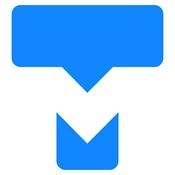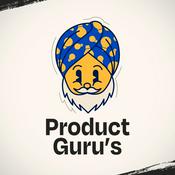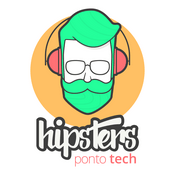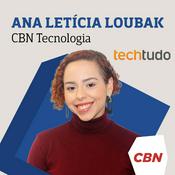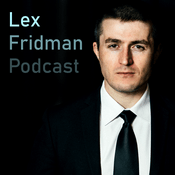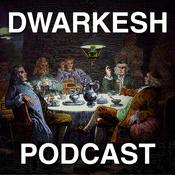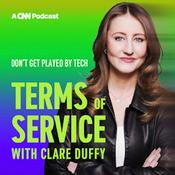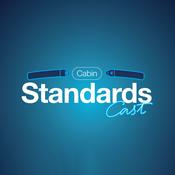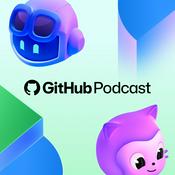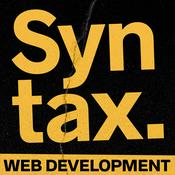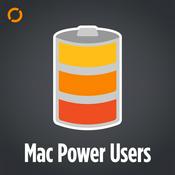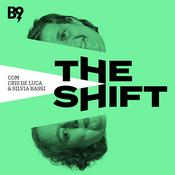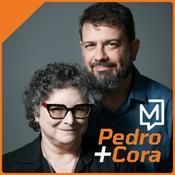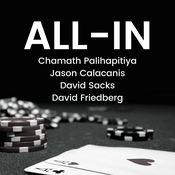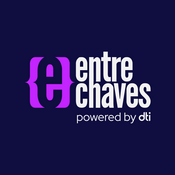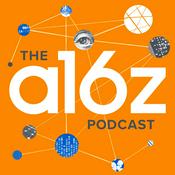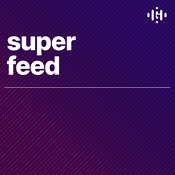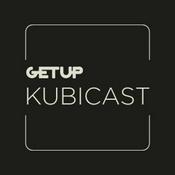45 episódios

Zapier’s CEO shares his personal AI stack | Wade Foster
05/1/2026 | 41min
Wade Foster is the co-founder and CEO of Zapier. In this episode, Wade shows how he uses meeting transcripts, Zapier agents, and even Grok to analyze company culture, evaluate interview candidates, and source talent from unexpected places. He explains why CEOs need to lead by example when it comes to AI adoption and shares practical workflows that any executive can implement to make hiring more effective and efficient.What you’ll learn:How to use meeting transcripts to extract your company’s “unspoken culture” and compare it against your stated valuesA workflow for creating AI interview evaluators that assess candidates against your job descriptions and company valuesHow to use Zapier agents to provide objective feedback on candidate interviews while checking your own biasesWhy CEOs should participate in AI “hackathons” and “show and tells” rather than just delegating AI adoptionA surprising technique for using Grok to find “diamonds in the rough” talent outside traditional recruiting channelsHow AI enables companies to complete tasks that were previously not economically viable—This entire episode is brought to you by:Brex—The intelligent finance platform built for founders—In this episode, we cover:(00:00) Introduction to Wade Foster(02:32) Zapier’s AI adoption(06:50) Creating AI fluency rubrics(08:37) Using Granola to extract company culture from meeting transcripts(10:49) Practical use cases for company culture rubrics(13:38) Building an AI interview evaluation agent in Zapier(16:50) Using Copilot to improve agent prompts(18:49) Ideas for enhancing the interview agent(22:31) Mistakes people make when using agents(25:11) Using Grok to find talent on social media platforms(33:39) Recap of AI workflows for recruiting and hiring(34:40) Lightning round and final thoughts—Tools referenced:• Zapier: https://zapier.com/• Zapier Agents: https://zapier.com/agents• Granola: https://granola.ai/• Grok: https://grok.x.ai/• ChatGPT: https://chat.openai.com/• Copilot: https://copilot.microsoft.com/—Other references:• Zapier values: https://zapier.com/about• How Zapier’s EA built an army of AI interns to automate meeting prep, strengthen team culture, and scale internal alignment | Cortney Hickey: https://www.lennysnewsletter.com/p/how-zapiers-ea-built-an-army-of-ai• How this CEO turned 25,000 hours of sales calls into a self-learning go-to-market engine | Matt Britton (Suzy): https://www.lennysnewsletter.com/p/how-this-ceo-turned-25000-hours-of—Where to find Wade Foster:Zapier: https://zapier.com/LinkedIn: https://www.linkedin.com/in/wadefoster/X: https://twitter.com/wadefoster—Where to find Claire Vo:ChatPRD: https://www.chatprd.ai/Website: https://clairevo.com/LinkedIn: https://www.linkedin.com/in/clairevo/X: https://x.com/clairevo—Production and marketing by https://penname.co/. For inquiries about sponsoring the podcast, email [email protected].

How Webflow’s CPO built an AI chief of staff to manage her calendar, prep for meetings, and drive AI adoption | Rachel Wolan
29/12/2025 | 43min
Rachel Wolan, the chief product officer at Webflow, has embraced AI not just as a product leader but as a hands-on builder. A coder since age 16, Rachel has returned to her technical roots by creating a custom AI chief-of-staff application that helps manage her executive workload. In this episode, she demonstrates how she uses personal AI software to prep for meetings, triage her calendar, manage emails, and even get brutally honest feedback about how she’s spending her time.What you’ll learn:How Rachel built a custom AI chief-of-staff application that integrates with her calendar, email, and moreWhy building personal software can be a gateway to understanding AI’s capabilities for executivesHow her AI agents help her prep for podcasts, dinners, and meetings with just-in-time informationThe technical approach to building personal AI software using markdown files, API tokens, and multiple LLM interfacesHow Rachel organized company-wide “builder days” that dramatically increased AI tool adoption across her organizationWhy she believes executives must lead by example in AI adoption to authentically drive organizational change—Brought to you by:Graphite—Your AI code review platformAtlassian for Startups —From MVP to IPO—In this episode, we cover:(00:00) Introduction to Rachel Wolan(02:26) Why Rachel started leaning into AI(06:26) Building an AI chief of staff(08:17) Prepping for the podcast(10:00) Rachel’s morning flow with her AI chief of staff(14:14) Designing a personalized interface with custom note cards(16:34) Getting “brutal truth” feedback from your AI assistant(19:34) Email triage and management workflows(23:31) Prepping for networking dinners and events(28:18) The result of building an AI chief of staff(30:09) Organizing “builder days” to drive AI adoption(35:38) Measuring the impact of AI adoption initiatives(38:00) Lightning round and final thoughts—Tools referenced:• Claude: https://claude.ai/• Claude Code: https://claude.ai/code• Cursor: https://cursor.com/• Google Calendar API: https://developers.google.com/calendar• Gmail API: https://developers.google.com/gmail• Webflow: https://webflow.com/• Figma: https://www.figma.com/• Make: https://www.make.com/• Hex: https://hex.tech/—Where to find Rachel Wolan:LinkedIn: https://www.linkedin.com/in/rachelwolan/X: https://x.com/rachelwolanWebflow: https://webflow.com—Where to find Claire Vo:ChatPRD: https://www.chatprd.ai/Website: https://clairevo.com/LinkedIn: https://www.linkedin.com/in/clairevo/X: https://x.com/clairevo—Production and marketing by https://penname.co/. For inquiries about sponsoring the podcast, email [email protected].

How to get your whole team excited about AI (and actually using it) | Brian Greenbaum (product designer at Pendo)
22/12/2025 | 47min
Brian Greenbaum is a Senior Staff Product Designer at Pendo who led a company-wide AI transformation after a personal epiphany while on paternity leave. After experiencing the power of AI coding tools firsthand, he created a structured approach to help his entire product organization adopt AI. In this episode, Brian shares his complete playbook for driving AI adoption across teams, measuring success, and navigating the organizational challenges that come with new technology adoption.What you’ll learn:The exact Slack message Brian sent while on paternity leave that kickstarted his company’s AI transformationHow to structure both synchronous and asynchronous AI learning opportunities for maximum adoptionThe two-pronged approach that dramatically increased AI tool usage across teamsWhy becoming your company’s AI champion is one of the best career moves you can make right nowHow to measure AI adoption success with sentiment surveys and clear metricsThe critical role of creating a “golden path” for AI tool usage with legal, security, and finance teams—Brought to you by:Google Gemini—Your everyday AI assistantLovable—Build apps by simply chatting with AI—In this episode, we cover:(00:00) Introduction to Brian Greenbaum(01:38) Brian’s paternity leave epiphany that sparked an AI initiative(05:00) Sending the message that launched a transformation(12:25) The two-pronged approach: synchronous and asynchronous learning(17:29) Encouraging experimentation and creative exploration(18:41) How AI enables designers to move beyond MVP thinking(22:00) Quick summary of the two-pronged approach(24:43) Measuring AI adoption(33:48) Creating a centralized AI knowledge center(35:58) Building an MCP server to demonstrate AI’s potential(44:08) Why technical understanding is crucial for non-technical roles(46:01) Final thoughts—Tools referenced:• Cursor: https://cursor.com/• Bolt.new: https://bolt.new/• Claude: https://claude.ai/• ChatGPT: https://chat.openai.com/• Midjourney: https://www.midjourney.com/• Gemini: https://gemini.google.com/—Other references:• Pendo: https://www.pendo.io/• Confluence: https://www.atlassian.com/software/confluence• Slack: https://slack.com/—Where to find Brian Greenbaum:LinkedIn: https://www.linkedin.com/in/briangreenbaum/—Where to find Claire Vo:ChatPRD: https://www.chatprd.ai/Website: https://clairevo.com/LinkedIn: https://www.linkedin.com/in/clairevo/X: https://x.com/clairevo—Production and marketing by https://penname.co/. For inquiries about sponsoring the podcast, email [email protected].

How Zapier’s EA built an army of AI interns to automate meeting prep, strengthen team culture, and scale internal alignment | Cortney Hickey
15/12/2025 | 44min
Cortney Hickey is the executive assistant to the CEO at Zapier, where she’s leveraging AI to transform traditional EA responsibilities into scalable, organization-wide systems. In this episode, she demonstrates how she’s built AI workflows that automate meeting preparation, reinforce company culture through automated feedback, and democratize strategic knowledge across the organization. Her approach shows how EAs can use AI not to replace their roles but to elevate them—working on higher-impact initiatives while creating systems that benefit the entire company.What you’ll learn:How to build an automated meeting prep system that researches participants, checks CRM data, and delivers actionable insights before important meetingsA framework for creating AI-powered culture reinforcement through automated meeting feedback aligned with company values and operating principlesHow to develop an AI-powered document review system that helps teams align with executive expectations before formal reviewsA strategy for creating a centralized knowledge base that makes company strategy accessible and interactive for all employeesWhy “progress over perfection” is the key mindset for building effective AI workflows that evolve over timeHow EAs can use AI automation to work themselves out of repetitive tasks and into higher-impact strategic roles—Brought to you by:WorkOS—Make your app enterprise-ready todayBrex—The intelligent finance platform built for founders—In this episode, we cover:(00:00) Introduction to Cortney(02:48) Overview of meeting prep automation with Zapier Agents(04:43) How the meeting prep agent works(10:21) An example of the meeting prep agent in practice(12:16) Creating a culture reinforcement system through meeting feedback(15:45) EAs’ unique position to leverage these tools(18:12) Building an automated meeting coach(24:03) Developing an executive document review system(33:15) Creating a centralized strategy companion in NotebookLM(36:18) How AI is transforming the EA role, not replacing it(40:00) Lightning round and final thoughts—Tools referenced:• Zapier: https://zapier.com/• Zapier Agents: https://zapier.com/agents• Todoist: https://todoist.com/• Slack: https://slack.com/• HubSpot: https://www.hubspot.com/• ChatGPT: https://chat.openai.com/• Google NotebookLM: https://notebooklm.google/—Where to find Cortney Hickey:LinkedIn: https://www.linkedin.com/in/cortneyhickey/—Where to find Claire Vo:ChatPRD: https://www.chatprd.ai/Website: https://clairevo.com/LinkedIn: https://www.linkedin.com/in/clairevo/X: https://x.com/clairevo—Production and marketing by https://penname.co/. For inquiries about sponsoring the podcast, email [email protected].

ChatGPT agent mode: The “little helper” that transformed recruiting, crafted user personas, and solved parking nightmares | Michal Peled (Honeybook)
08/12/2025 | 58min
Michal Peled is a Technical Operations Engineer at HoneyBook who specializes in building internal tools and automations that eliminate friction for teams. In this episode, Michal demonstrates three practical AI use cases: using ChatGPT’s agent mode to automate LinkedIn recruiting, transforming customer research into interactive AI personas, and creating a custom calendar solution for a very San Francisco–specific problem—avoiding expensive parking during Giants games.What you’ll learn:How to use ChatGPT agent mode to automate LinkedIn recruiting and find high-quality candidates that manual searches missedThe step-by-step process for turning static customer research into interactive AI personas that product and marketing teams can actually useWhy NotebookLM excels at creating prompts from source material with proper citationsHow to structure agent-mode prompts to create effective “little helpers” that follow your exact workflowA practical framework for improving your prompts when AI tools aren’t giving you the results you wantHow internal tools teams can drive massive impact by focusing on eliminating friction in everyday workflows—Brought to you by:Brex—The intelligent finance platform built for foundersGoogle Gemini—Your everyday AI assistant—In this episode, we cover:(00:00) Introduction to Michal and ChatGPT agent mode(02:10) Using agent mode for LinkedIn recruiting automation(05:14) Creating effective prompts for agent mode(10:50) Demo of agent mode searching LinkedIn profiles(16:29) Results and team reception of the recruiting automation(19:53) The outcome of implementing on Michal’s team(23:50) Creating custom GPT personas from customer research(28:43) Using NotebookLM to transform research into persona prompts(35:00) Adding guardrails to custom GPT personas(37:20) Demo of interacting with custom-persona GPTs(41:02) Creating a calendar automation for parking during baseball games(48:15) Lightning round and final thoughts—Tools referenced:• ChatGPT: https://chat.openai.com/• NotebookLM: https://notebooklm.google.com/• Claude: https://claude.ai/—Other references:• Google Calendar: https://calendar.google.com/• HoneyBook: https://www.honeybook.com/• LinkedIn: https://www.linkedin.com/—Where to find Michal Peled:LinkedIn: https://www.linkedin.com/in/michalpeled/—Where to find Claire Vo:ChatPRD: https://www.chatprd.ai/Website: https://clairevo.com/LinkedIn: https://www.linkedin.com/in/clairevo/X: https://x.com/clairevo—Production and marketing by https://penname.co/. For inquiries about sponsoring the podcast, email [email protected].
Mais podcasts de Tecnologia
Podcasts em tendência em Tecnologia
Sobre How I AI
Ouça How I AI, Resumo de Notícias e muitos outros podcasts de todo o mundo com o aplicativo o radio.net

Obtenha o aplicativo gratuito radio.net
- Guardar rádios e podcasts favoritos
- Transmissão via Wi-Fi ou Bluetooth
- Carplay & Android Audo compatìvel
- E ainda mais funções
Obtenha o aplicativo gratuito radio.net
- Guardar rádios e podcasts favoritos
- Transmissão via Wi-Fi ou Bluetooth
- Carplay & Android Audo compatìvel
- E ainda mais funções


How I AI
baixe o aplicativo,
ouça.

